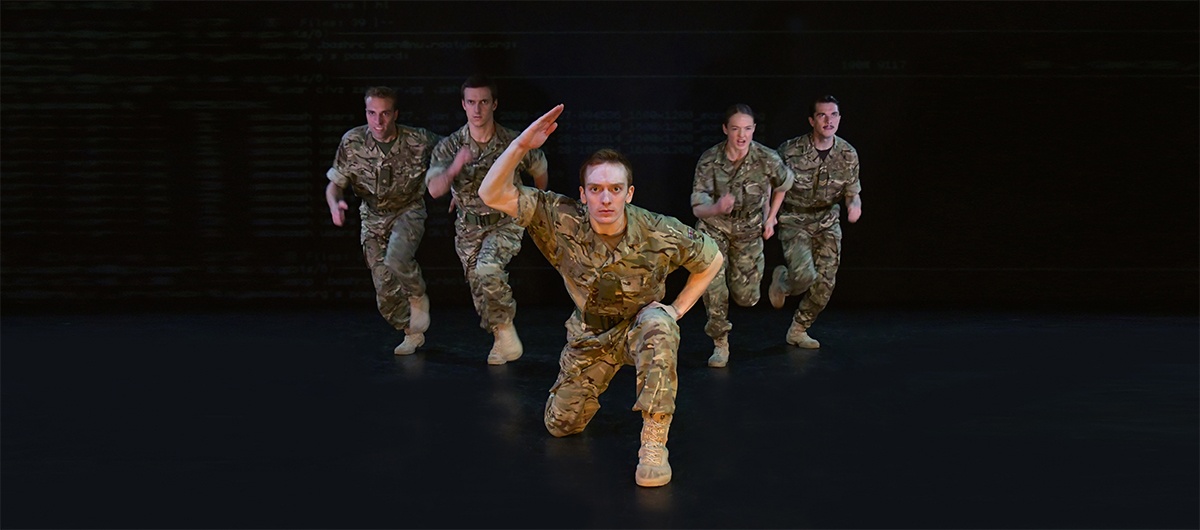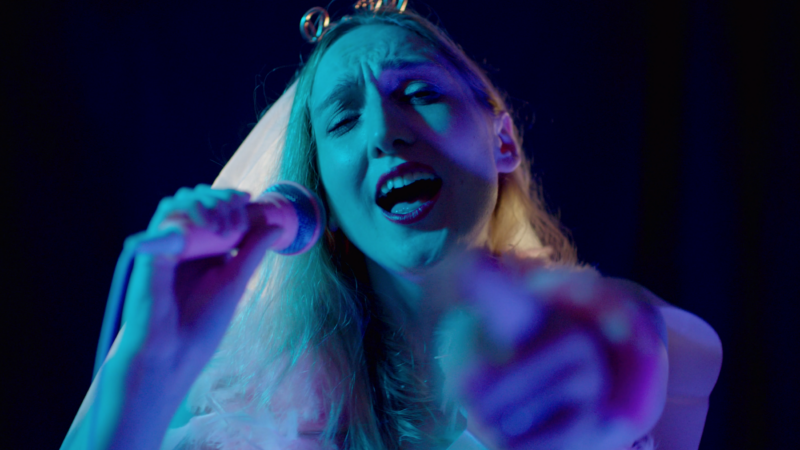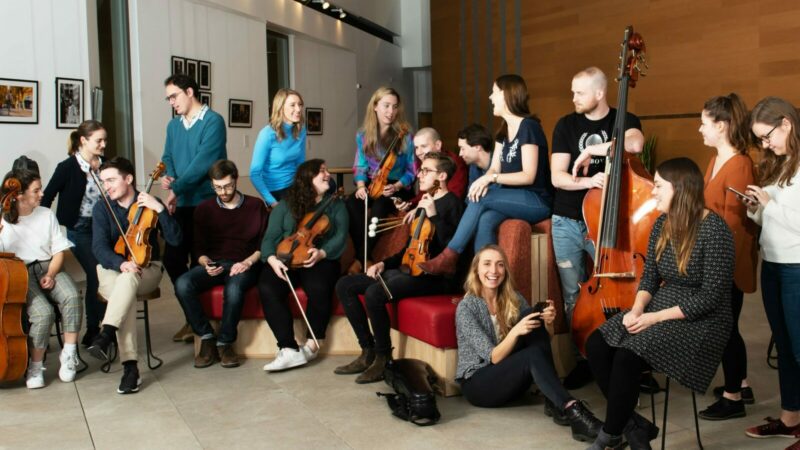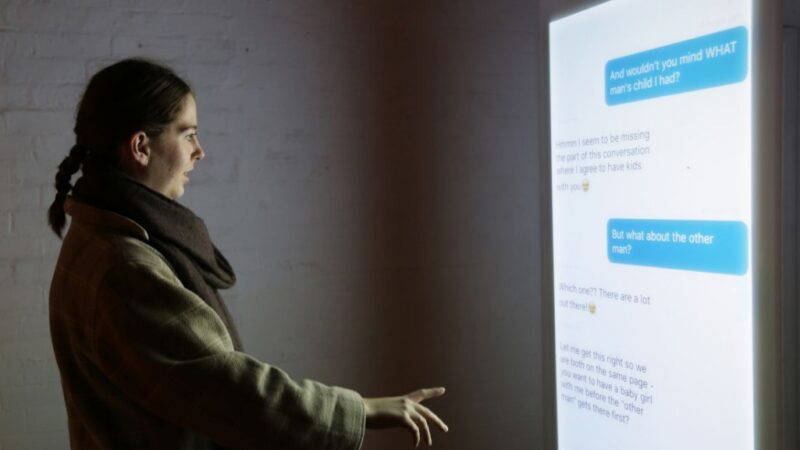Rosie Kay’s 5 SOLDIERS was live streamed from the Yeomanry House drill hall in Bloomsbury, London on 8th September 2017. Rosie Kay and her Executive Producer, James Preston, reveal some of the challenges and the opportunities the experience gave them and how it helped them reach new and diverse audiences.
Twelve years ago, while recovering from an injury, dancer and choreographer Rosie Kay conceived the idea that would become a hugely successful piece. 5 SOLDIERS, started as a choreographed work performed live and the company formed an unique partnership with the British Army to support a tour across drill halls. Then, following support from The Space the company were commissioned to extend their reach to digital audiences via a live stream.
Finding inspiration
Rosie came up with the concept for the work following a serious leg injury; “After the operation on my leg, I had a dream that I lost a limb on a desert battle field,” she explains. “It made me question how I use my body as a dancer and the risks that I take. It can be quite risky out there on stage, but you don’t tend to risk your life. I started wondering if, as a dancer, I could understand how yu train and what motivates a soldier. I wanted to get behind the headlines and see how soldiers plan for and take risks as part of their job.”
Kay negotiated an attachment to an all-male British Army infantry battalion and spent time with them on battle training exercises, during pre-deployment training to Afghanistan.
Kay goes on: “I also spent time at a military rehabilitation centre and military hospital over the next year, gaining access that was quite rare during a time of high injury and mortality rates. By then, the soldiers I’d trained with on Dartmoor and Salisbury Plain were the ones coming back with life-changing injuries. Having gained this access, and seen the transformation of these soldiers, I felt a need to say something about this situation that was very real.”
The resulting piece, 5 SOLDIERS, is an exploration of modern war as a physical experience, with the dancers going through training, drill exercises, off duty play and intense relationships and then finally on the ground on enemy terrain. A member of the company steps on an IED (Improvised Explosive Device), the resulting explosion pulled out in time and the piece ends with a solo with the soldier/dancer apparently a double amputee.
Reaching outside of the traditional arts world
The show was performed variously in theatres and on army bases, crossing a line between the arts world and the army that is rarely breached. Great reviews followed, but it wasn’t all plain sailing. “The show got seriously picked up by the critics – we got a five-star review from Luke Jennings in the Observer”, says Kay. “Touring to military bases could be demanding; but we had the same experience every time we went to a base: we were given a tough time when we arrived, but by the time the soldiers had seen the show, that changed, and without fail, everywhere we went, the barriers came down and the response was so emotional, immediate and heartfelt, that we knew that what we were doing was right. We knew we had a good show.”
James Preston, Executive Director at the company reveals they trailblazed in other ways too. “We also headlined the army’s first ever Fringe venue, helped set it up and produced a lot of the programme. It caused a few waves when Summerhall [an arts venue used to present many Edinburgh Fringe performances] announced that they were going into partnership with the army. In Edinburgh, we had Scottish audiences who had missed the work on its previous tour as well as general Fringe audiences who heard about it through positive reviews. As it was pitched as a five-star show, we found the Edinburgh audiences arrived expecting to be impressed and so initially they were a little standoffish – however they were soon won over- a significant number were from the military. We held a discussion after every show and more than half the audience stayed every night to discuss the themes that had been explored. We also won a Summerhall Jawbone Award for ‘Greatest Festival Moments’.

“We got through the opening weekend of that, got everything up and running, and felt like we could relax, and then [having previously applied to The Space for funding during a commissioning round] we got the email from them on Monday morning, confirming they were interested in supporting us to live-stream the show and which meant we needed to turn it around in less than six weeks! We had a really short time-scale.”
There were challenges, not least that the company had never live-streamed before. “I’ve made digital content before,” says Kay. “It’s something we’ve long been interested in, and in our work we use quite a lot of digital projection and we tend to try and film our work. It’s something that’s always on our periphery, but we’ve not had the luxury of really putting weight and time and energy and money behind it.”
For Preston, “Time was a challenge and a blessing. There are just the two of us, plus a digital marketing manager. There was a huge amount to do in that time, even just administratively – we had to register for VAT, go into all sorts of legal areas that were new, lots of thinking. We just had to go for it – there was no faffing about! There was a lot of energy and drive behind it.
Rights and clearances
“For our size of company, it was testing. The work was made originally eight years ago (in 2010), so there were some rights issues that had never had to be considered previously for our staged work. Suddenly, we had to think about what clearances we needed to publish online.
Kay says: “The music in particular took a lot of time and thought, and a lot of to-ing and fro-ing, and a bit of gambling – we left some decisions to the very last minute, to wait to see if we got the rights. Due to the tight timescale, we were unable to secure rights for a couple of chart tracks. We worked to find alternatives that had the same tone and feeling but were easier to license.
We also had to add some additional lighting as the show is quite dark and wouldn’t have picked up on camera so well, and we had to upgrade the strength of the projectors used in the show.”
We had to stay calm. The pressure was very high on us and on the dancers. We had some of the highest-ranking officers coming along to be part of a post-show talk, and they travel with an entourage, and there’s protocol and it’s complicated. There’s the camera team, The Army, Sadler’s Wells, and us trying to co-ordinate everything. The audience is a mixture of soldiers and veterans, and the arts audience. Never the two shall meet, except in this show! We tread a very careful line.”
Collaborations are important
Just as the live show had provided proof that there’s a place for dance outside the traditional art sector if you collaborate with the right people and get their help to reach out to audiences where they are already spending time. So, the same lesson applied to the digital world. Rosie Kay Dance Company live streamed their show via BBC Arts and persuaded the British Army to stream via their Facebook page helping them to reach an audience of far greater than their expectations.
“When we asked the army initially, they said no. They have 1.5m likes on Facebook, all of whom have been gained through organic activity; they haven’t paid to promote any content. They were very protective of that, and unsure how this show would be received by their followers and whether it would lead to criticism on both sides. We tried to convince them, and really fought for it. They talked about it, and eventually agreed. But they were very careful and warned us that they reserved the rights to cut it at any point, and we agreed to that condition.
The Army wanted to be sure that the performance wouldn’t alienate their organically recruited audience and that viewers would understand the context of the show and where it had come from. The response was positive even though the content may have been unexpected for certain viewers. All in all, 70,000 saw the stream.
“One of our aims as a company is to engage audiences who might not otherwise attend contemporary dance – streaming through the army Facebook page allowed us to do this. We received good public feedback during the stream and also some direct private feedback from serving military who praised the work for its authenticity and for dealing honestly with potentially difficult subjects not normally explored through art.
“There is a genuine appetite within the army to do new things, to engage with the public, and to do things that they may not have done before. This project has inspired us to talk about new digital-only projects on a larger scale. Before we did The Space commission, we were thinking about digital in terms of live performance, and now we’re building projects from digital up, starting with the mechanism being the screen rather than a live performance that is digitised.”
Kay says, “We’re trying to sell the show internationally, and being able to show promoters the stream is such a better way to show them the piece than just a film of the production. It looks great, it’s a great selling tool, and it’s got kudos as well. That has been really helpful – we’re now going to Denmark and the US with the work. Having this great resource didn’t nail it for us, but it really helped. We couldn’t afford something this good in normal conditions.”
How useful was this resource?




